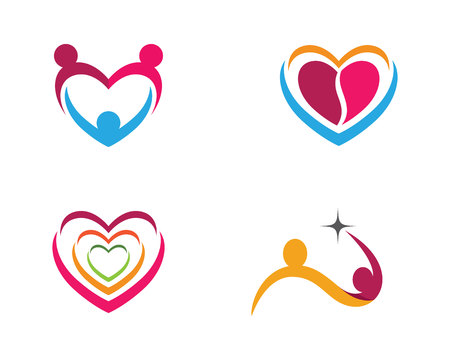Introduction: Understanding the Importance of Support Systems
When a child experiences an injury, the journey towards recovery can be complex and challenging. It is not only the physical healing that matters but also the emotional and psychological well-being of the child. In this context, support systems—particularly those provided by family members and schools—play a crucial role in facilitating a child’s rehabilitation. This article explores why these networks are so vital, especially within the UK, where unique cultural and systemic factors shape children’s recovery experiences. Families offer comfort, motivation, and advocacy, while schools provide structure, continuity, and social inclusion. Together, they help bridge gaps between medical care and everyday life, ensuring that children do not feel isolated or left behind during their recovery. In the UK, however, there are specific challenges such as varying access to rehabilitation services across regions and the need for better coordination between healthcare providers, families, and educational institutions. Understanding these dynamics is essential for fostering effective support systems that truly meet the needs of injured children on their path to recovery.
2. The Family’s Role in Rehabilitation
Family members play a central part in a child’s recovery journey after an injury. Their involvement not only accelerates physical healing but also supports emotional wellbeing, helping the child regain confidence and independence. Below, we explore how families can actively contribute to rehabilitation.
Encouragement and Emotional Support
Children recovering from injuries often experience a range of emotions, such as fear, frustration, or sadness. Family members provide comfort through positive reinforcement, reassurance, and by celebrating small milestones. This emotional backing is crucial for maintaining motivation throughout the rehabilitation process.
Daily Care and Practical Assistance
Everyday routines may need to be adjusted following an injury. Families often take on new responsibilities, from assisting with mobility to managing medication schedules. The table below highlights some typical ways families support daily care:
| Area of Support | Examples |
|---|---|
| Mobility Assistance | Helping with walking aids, transfers, or navigating stairs |
| Personal Care | Assisting with bathing, dressing, or toileting |
| Medication Management | Ensuring medications are taken correctly and on time |
| Routine Adaptation | Adjusting family activities to accommodate new needs |
Communication with Healthcare Professionals
An open line of communication between families and healthcare professionals is essential for effective rehabilitation. Parents and carers act as advocates for their child by attending appointments, asking questions, and clarifying treatment plans. This collaborative approach ensures that the child’s needs are fully understood and addressed.
The Importance of Consistency at Home
Consistency in care routines at home helps reinforce therapy goals set by clinicians. By closely following professional guidance and providing feedback on progress or challenges, families help create a supportive environment that fosters recovery.

3. Support within UK Schools
Schools across the UK play a vital role in supporting children as they recover from injuries, ensuring that both practical and emotional needs are addressed. Recognising that every child’s rehabilitation journey is unique, educational institutions work collaboratively with families and healthcare professionals to provide a nurturing environment that enables students to thrive during their recovery.
Adjustments to Learning Environments
One of the key ways schools support injured children is by making reasonable adjustments to the learning environment. This might involve arranging accessible classrooms, providing specialist equipment such as ergonomic chairs or writing aids, or allowing flexible timetables for medical appointments and therapies. Teachers and support staff are often trained to adapt lesson plans and classroom activities so that all pupils can participate fully, regardless of any physical limitations.
The Role of School Nurses
School nurses are an essential part of the support network for recovering children. They work closely with families, healthcare providers, and teachers to monitor the child’s health needs during school hours. School nurses can assist with medication administration, wound care, or mobility issues, helping to ensure a smooth transition back into school life after an injury.
Pastoral Care Teams and Emotional Wellbeing
Pastoral care teams, including counsellors and wellbeing coordinators, are instrumental in supporting the emotional recovery of injured pupils. These professionals offer one-to-one sessions, group workshops, and tailored interventions designed to help children manage feelings of anxiety, frustration, or isolation that may arise after an injury. By fostering open communication and providing a safe space for children to express their concerns, pastoral teams contribute significantly to building resilience and promoting positive mental health throughout the rehabilitation process.
Collaboration with Families
Effective support within UK schools relies heavily on ongoing dialogue with families. Regular meetings allow parents and carers to share updates on their child’s progress and ensure that school-based strategies remain aligned with medical recommendations. This partnership approach helps create a consistent network of care that supports both educational achievement and overall wellbeing during rehabilitation.
4. Collaboration Between Families and Education Providers
Effective collaboration between families and education providers is essential for supporting children’s rehabilitation after injury. When parents, carers, and school staff work together, children receive consistent support both at home and in the classroom, which can significantly enhance their recovery and overall well-being.
The Importance of Open Communication
Open communication ensures that everyone involved in a child’s care is aware of their needs, progress, and any challenges faced during rehabilitation. Regular updates help to align strategies across home and school environments, minimising misunderstandings and promoting a seamless approach to recovery.
Benefits of Shared Decision-Making
Shared decision-making involves parents or carers and school staff working together to make informed choices about the child’s rehabilitation plan. This inclusive approach values the unique insights each party brings, leading to more personalised support for the child. Involving families in decisions also fosters trust and encourages active participation throughout the process.
Effective Communication Methods
| Method | Description | Benefits |
|---|---|---|
| Regular Meetings | Scheduled catch-ups between parents/carers and school staff to discuss progress and concerns | Ensures ongoing dialogue and timely adjustments to support plans |
| Home-School Diaries | A written log shared daily or weekly between home and school | Keeps both parties informed about daily achievements or issues |
| Email Updates | Frequent electronic communication regarding milestones or changes in needs | Provides quick updates and a record of correspondence |
| Multi-Disciplinary Team Meetings | Involvement of healthcare professionals alongside family and school staff | Facilitates comprehensive planning with expert input from all perspectives |
Strategies for Successful Collaboration
- Respectful Listening: Allowing all voices—parents, carers, teachers, and specialists—to be heard without judgement.
- Clear Goal Setting: Establishing shared goals for the child’s rehabilitation journey ensures everyone is working towards the same outcomes.
- Cultural Sensitivity: Acknowledging cultural preferences or family values when making decisions helps create a supportive environment tailored to the child’s background.
- Flexibility: Being open to adjusting strategies as the child progresses or as new challenges arise.
Together, these collaborative efforts not only strengthen the rehabilitation process but also empower children and their families to actively participate in their own recovery journey.
5. Community and NHS Resources
In the UK, children recovering from injuries are supported not only by their families and schools but also through a wide range of community and NHS resources. These services play a crucial role in ensuring holistic rehabilitation and helping young people reintegrate into their daily lives.
Local Support Groups
Across the country, local support groups offer invaluable help for both injured children and their families. These groups often provide emotional support, practical advice, and a sense of community. Parents and carers can share experiences, learn coping strategies, and access information about navigating the rehabilitation process. Many groups also organise activities for children to rebuild confidence and social skills during recovery.
Paediatric Rehabilitation Services
The NHS provides dedicated paediatric rehabilitation services designed to meet the specific needs of children following an injury. These multidisciplinary teams may include physiotherapists, occupational therapists, psychologists, and speech and language therapists. Their collective expertise ensures that every aspect of a child’s recovery is addressed—from physical healing to emotional wellbeing. Children can access these services both as inpatients in hospitals or outpatients within community clinics, depending on the severity of their injuries.
The Role of the NHS
The NHS acts as a central pillar in supporting children’s rehabilitation journeys. GPs typically coordinate care by referring patients to specialist teams when necessary. The NHS also offers follow-up clinics, ongoing therapy sessions, and monitoring to ensure each child continues progressing in their recovery. For families who may feel overwhelmed or unsure where to turn next, NHS helplines and online resources provide guidance and reassurance at every stage.
Working Together for Comprehensive Care
Collaboration between families, schools, community groups, and NHS services is essential for optimal outcomes. By taking advantage of these resources, children have a much better chance of regaining their independence and returning to school life with confidence.
6. Practical Strategies for Holistic Recovery
Supporting a child’s rehabilitation after injury requires collaboration, patience, and thoughtful planning from both families and schools. Here are some practical approaches that can help create a nurturing environment, ensuring the child’s well-being and facilitating a smooth, gradual return to daily life.
Open Communication and Partnership
It is essential for parents, teachers, and healthcare professionals to maintain clear lines of communication. Families should keep schools informed about the child’s medical progress, needs, and any adjustments in care. Likewise, schools should provide regular updates on academic performance and social integration, allowing everyone to work together towards shared goals.
Personalised Learning Plans
Schools can develop tailored learning plans that accommodate the child’s specific needs during recovery. This might involve flexible timetables, home-based assignments, or reduced physical activity requirements. Teachers may also provide additional support or resources so that the child does not fall behind academically while they recover.
Emotional and Social Support
Both at home and in school, fostering emotional well-being is vital. Encourage open conversations about feelings and anxieties related to the injury. Schools might offer peer mentoring or access to counselling services, while families can create a safe space for children to express concerns without judgement.
Gradual Reintegration into Activities
A phased approach to returning to schoolwork, sports, or social activities helps prevent overwhelm and setbacks. Start with short periods of participation and gradually increase involvement as confidence and stamina improve. Celebrate small milestones along the way to boost morale.
Promoting Independence
Empower children by involving them in decision-making about their routines and rehabilitation goals. Allowing them to set achievable targets fosters a sense of control and encourages active participation in their recovery journey.
Collaborative Problem-Solving
If challenges arise—whether academic, physical, or emotional—families and schools should work together to find creative solutions. For example, if mobility is an issue, ensure accessible routes around school premises or arrange classroom seating accordingly. By remaining adaptable and proactive, adults can remove barriers that hinder progress.
Ultimately, holistic recovery hinges on a supportive network where both family members and educators champion the child’s needs. By implementing these strategies with empathy and consistency, we can help children regain confidence, independence, and a sense of normalcy after injury.


